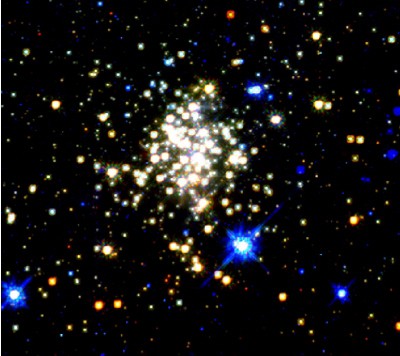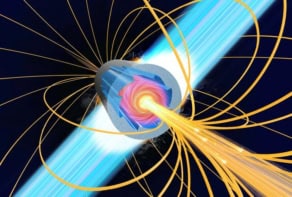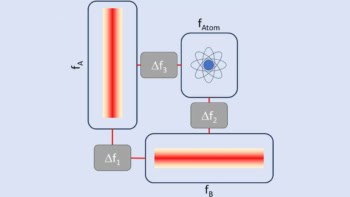Stars may not be able to grow bigger than about 150 times the mass of our Sun according to an astronomer in the US. Donald Figer of the Space Telescope Science Institute in Maryland reached this conclusion after measuring the masses of stars in the nearby "Arches" stellar cluster (Nature 434 192). The result is the first direct measurement of the upper mass limit for stars.

At present there is no accepted upper mass limit for stars. Although stellar evolution models have predicted that stars as heavy as 1000 solar masses should be able to form, no such stars have ever been observed.
The probability of finding stars heavier than around 1 solar mass decreases as the mass of stars increases so heavy stars can only be found in massive clusters that contain large populations of stars. The Arches cluster, which lies around 25,000 light years away at the centre of our galaxy, is one such cluster. It contains about 150 hot, young, “single-aged” stars (which are no more than a few million years old) concentrated within a radius of about one light year, making it the most compact cluster of stars in our galaxy. In principle, it should contain a significant number of very heavy stars.
Using the Near-Infrared Camera and Multi-Object Spectrometer instrument on the Hubble Space Telescope, Figer began by measuring the amount of radiation coming from individual stars in this cluster. He used these measurements to calculate the stars’ power output, which in turn allowed him to directly estimate the mass of the stars. He found that no star was bigger than 150 solar masses.
Figer’s results agree with previous, indirect, observations of the “R136” cluster in a nearby galaxy called the Large Magellanic Cloud, where astronomers also did not find any stars heavier than 150 solar masses. However, R136 contains a “mixed-age” population of stars where most of the mass lies in older stars that may have already died and exploded to become supernovae.
“There is no clear explanation for why stellar masses should be limited to near 150 solar masses,” says Pavel Kroupa of the University of Bonn in a related News and Views article in Nature. “A nagging uncertainty remains: the details of supernova mechanisms are not fully understood, and it may be that stars more massive than 150 solar masses did exist [in the Arches cluster] but have already imploded to black holes.”
However, Figer says that stars in the Arches cluster are too young to have reached the supernova, let alone the black hole, stage in their lives.



